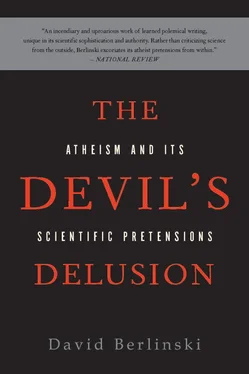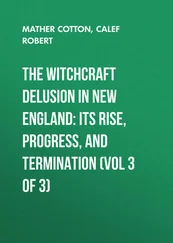An informal poll indicated that the audience of physicists rejected his views by a margin of four to one.
“We win some and we lose some,” Weinberg remarked equably.
The Landscape is a new idea in physical thought, but it is not a new idea. Philosophers have long found the restriction of their thoughts to just one universe burdensome. In the late 1960s, David Lewis assigned possible worlds ontological benefits previously reserved to worlds that are real. In some possible world, Lewis argued, Julius Caesar is very much alive. He is endeavoring to cross the Hudson instead of the Rubicon, and fuming, no doubt, at the delays before the toll booth on the George Washington Bridge. It is just as parochial to reject this world as unreal, Lewis argued, as it would be to reject Chicago because it cannot be seen from New York. Lewis argued brilliantly for this idea, known as modal realism. The absurdity of the resulting view was not an impediment to his satisfaction. Or to mine, needless to say.
Quantum mechanics has also invited the promotion of possible worlds to the ontological Big Time, as readers may remember from chapter 5, where dead-cat universes proliferated alongside universes containing live cats.
During the 1980s, the physicist Alan Guth argued that the early universe was characterized by a period of exponential inflation. Very soon after it blew up in the first place, it blew up again. When suitably blown up, it stopped blowing up. The Stanford physicist André Linde carried this idea a step further in his theory of eternal chaotic inflation. Universes are blowing up all over the place. They cannot stop themselves.
When string theorists talk about the Landscape, they are among friends. If their friends were willing to believe in anything, string theorists, having so lately consorted with twenty-six dimensions, are hardly in a position to complain.
There is no need to turn to such esoteric doctrines to capture the underlying current of thought that animates the Landscape. It is simply the claim that given sufficiently many universes, what is true here need not be true there, and vice versa. This thesis has been current in every college classroom for at least fifty years. It arises spontaneously in discussion, like soap bubbles in water. It is expressed in the same way and often by the same stolid, heavy-thighed undergraduate—a Mr. Waldburg, in my case and class.
After raising his hand with the air of a man compelled to observe the obvious, he has this to say: There are no absolute truths.
Waldburg, meet Weinberg.
Although initiated as a whim, the Landscape has been welcomed by string theorists as a deliverance. Whether string theory is rescued by the Landscape is relatively a trivial matter. Theories come and go, and if this one goes, another is sure to come. The Landscape has acquired a life of its own because it is addressed to issues that arise whatever the theory whenever it arrives. If science, as the French mathematician René Thom once remarked, is an attempt to reduce the arbitrariness of our descriptions, then every theory short of one that is logically necessary must in the end provoke the same two questions: Why are its numerical parameters as they are? And why are its assumptions what they are?
The Landscape provides a generic answer. It is all-purpose in its intent. It works no matter the theory. And it works by means of the simple principle that by multiplying universes, the Landscape dissolves improbabilities. To the question What are the odds? the Landscape provides the invigorating answer that it hardly matters. If the fine-structure constant has in our universe one value, in some other universe it has another value. Given sufficiently many universes, things improbable in one must from the perspective of them all appear certain.
The same reasoning applies to questions about the laws of nature. Why is Newton’s universal law of gravitation true? No need to ask. In another universe, it is not.
The Big Fix has by this maneuver been supplanted by the Sure Thing.
As one half of the flight into the fantastic, the Landscape does what it can, and what it does, it does very well. It dilutes the acrid acid of improbability. But as philosophers and physicists at once observed, the Landscape offers a general solution to what is, in fact, a particular problem. The multiplication of universes establishes that in some universe, the fine-structure constant will take any designated value. It is a Sure Thing. Nonetheless, the Sure Thing establishes only that life’s lucky numbers will sooner or later turn up somewhere or other.
And yet they have turned up here, just where we need them the most. Requiring certain amenities, we find ourselves in a universe in which they have been liberally supplied. This may not be a paradox in thought, but surely it seems a very good deal. We might well have found ourselves in a far less agreeable universe, one in which none of life’s lucky numbers were tuned to their sweet spot.
And where would we have been then?
The Landscape now works hand in glove with a second radical idea in physical thought. In the same paper in which he drew attention to the question of fine tuning, Brandon Carter observed that “the universe must be such as to admit the creation of observers within it at some stage.” Such is the Anthropic Principle, or, at least, one of them, since the principle now comes in a variety of forms and flavors. It consists, when analyzed, of two quite separate claims.
The first is a matter of common sense. If the universe had not admitted the creation of observers at some stage, why, then, we would not be here.
The second is a claim about the facts of life. If we are surprised by a universe in which we have been given what we need, some part of that surprise, Carter argued, represents a form of bad faith. If the necessities of life are necessary, they must be inevitable. And if inevitable, whence the surprise?
The simple fact that we are where we are is sufficient to explain why we have what we have.
What more could anyone ask?
The question why the ultimate laws of nature are true, and why its numerical parameters have the value that they do, now admits of a two-part response. The first is provided by the Landscape. Neither the numbers nor the laws represent anything improbable. And the second by the Anthropic Principle: If they were false, or if they had different values, where would you be?
Nowhere, right?
And yet here you are.
What did you expect?
The great difficulty with the Landscape and the Anthropic Principle is that physicists prepared to welcome these ideas had no way in which to control them, while physicists prepared to reject them had no way in which to avoid them. In a stimulating paper entitled “Multiverses and Physical Cosmology,” the distinguished cosmologists G.F.R. Ellis, U. Kirchner, and W. R. Stoeger considered the idea that in the Landscape anything goes because everything is possible. “In some universes,” they write, “there will be a fundamental unification of physics expressible in a basic ‘theory of everything,’ in others this will not be so.”
But having advanced this conjecture, Ellis, Kirchner, and Stoeger have neglected to tell us whether it is true across the Landscape. If so, then not everything goes; and if not, how could it be of interest?
Читать дальше













